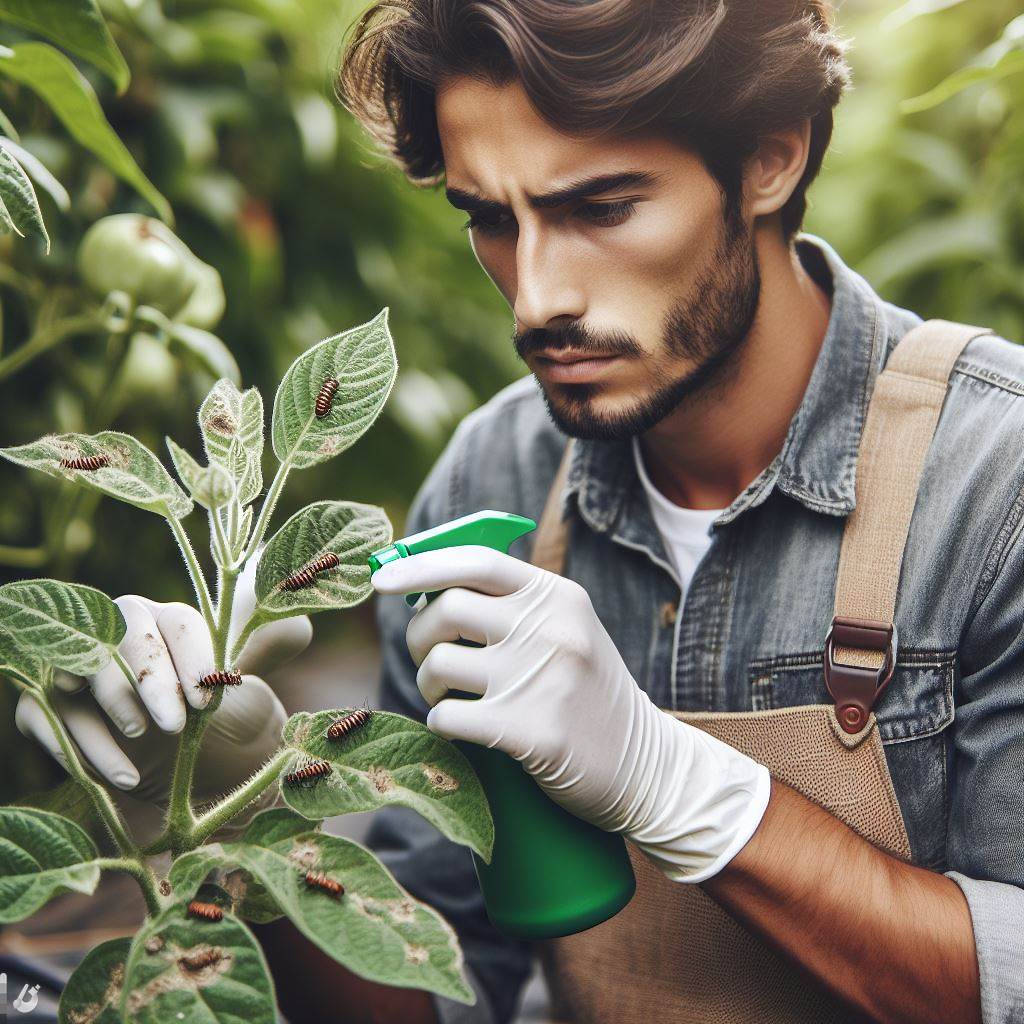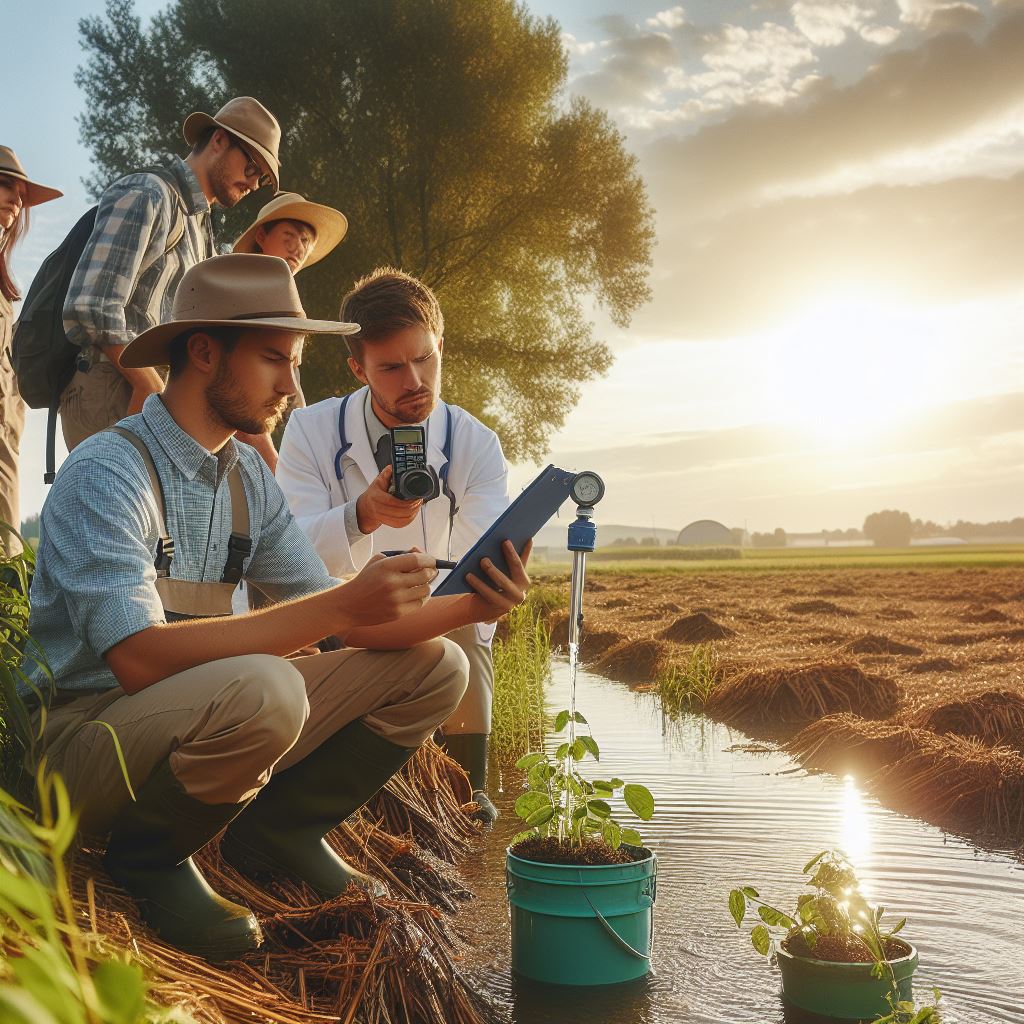Introduction
Definition of Integrated Pest Management (IPM)
Integrated Pest Management (IPM) is a holistic approach to pest control that focuses on prevention and eradication using environmentally friendly methods.
Importance of eco-friendly pest management tactics
Eco-friendly pest management tactics are crucial for preserving ecosystems, protecting human health, and maintaining agricultural productivity.
The Principles of Integrated Pest Management
Prevention
Prevention involves implementing measures to minimize pest infestations, such as proper sanitation and crop rotation.
Monitoring
Regular monitoring and scouting allow farmers to identify pests early on, enabling targeted interventions.
Identification
Accurate pest identification is vital for selecting the most effective and environmentally friendly control methods.
Thresholds
IPM establishes economic or environmental thresholds, which determine intervention levels based on the potential damage caused by pests.
Control Methods
Eco-friendly control methods are prioritized, including biological control, cultural practices, and physical barriers.
Evaluation
Regular evaluation assesses the effectiveness of pest management strategies and helps make necessary adjustments.
Benefits of Integrated Pest Management
Environmental Sustainability
IPM minimizes the use of pesticides, reducing chemical pollution and preserving biodiversity.
Economic Advantages
Efficient pest control through IPM can lead to cost savings for farmers and avoid crop losses.
Health and Safety
By limiting pesticide exposure, IPM protects the health of agricultural workers, consumers, and surrounding communities.
Successful Examples of Integrated Pest Management
Biological Control
Introducing natural predators, such as ladybugs or birds, to control pests without harming the environment
Crop Rotation
Rotating crops prevents the buildup of pest populations and reduces reliance on chemical treatments.
Habitat Manipulation
Creating favorable habitats for beneficial insects and animals helps naturally suppress pest populations.
Integrated Pest Management is a sustainable and effective approach to pest control that prioritizes ecological balance, human health, and economic viability.
Transform Your Agribusiness
Unlock your farm's potential with expert advice tailored to your needs. Get actionable steps that drive real results.
Get StartedBy implementing eco-friendly tactics, we can protect the environment and ensure a secure future for agricultural production.
Sustainable Pest Control Methods
Pest control plays a crucial role in maintaining the health and productivity of agricultural systems.
However, traditional pest control methods often rely on harmful chemicals that can have negative impacts on the environment and human health.
In recent years, there has been a growing emphasis on adopting sustainable pest control methods, such as Integrated Pest Management (IPM), which prioritize eco-friendly tactics.
Biological Control
One key component of sustainable pest control is biological control, which involves the use of natural enemies to regulate pest populations.
This concept is based on the understanding that many beneficial insects, such as ladybugs and parasitic wasps, can prey on or parasitize pests, effectively reducing their numbers.
Examples of beneficial insects used for pest control include lacewings, which feed on aphids, and nematodes, microscopic roundworms that attack pest larvae in the soil.
By introducing these natural enemies into agricultural systems, farmers can reduce their reliance on chemical pesticides and promote a more balanced ecosystem.
However, while biological control offers numerous benefits, it also has limitations.
Factors such as weather conditions, the availability of natural enemies, and the presence of alternative food sources can affect their effectiveness.
Additionally, biological control methods may take longer to achieve results compared to chemical pesticides, requiring patience and careful monitoring.
Cultural Control
Cultural control is another important element of sustainable pest management.
This approach focuses on modifying agricultural practices to prevent pest infestations and minimize their impact.
One key strategy is crop rotation and diversification, which involves rotating different crops in a specific sequence to disrupt pest life cycles and reduce pest population build-up.
Proper irrigation and water management also play a crucial role in cultural control.
By providing plants with the appropriate amount of water, farmers can promote healthier plant growth and reduce stress, making them less susceptible to pests.
Good water management practices, such as avoiding over-irrigation or using drip irrigation, can also minimize the creation of favorable conditions for pests.
In addition, maintaining proper sanitation practices within agricultural systems is vital. Removing crop residues, weeds, and other debris can eliminate potential hiding places and breeding grounds for pests.
Regularly cleaning equipment and containers also reduces the risk of pests being transported between different areas of the farm.
Physical Control
Physical control methods involve the use of physical barriers, traps, or mechanical techniques to prevent or reduce pest damage.
One commonly used physical control method is the installation of barriers, such as nets or screens, to physically exclude pests from reaching crops.
This can be particularly effective in protecting high-value crops from insects or larger pests like birds.
Traps are another essential tool in physical control. These devices can lure pests and capture them, preventing further damage to the crops.
There are various types of traps available, including sticky traps, pheromone traps, and light traps, each designed to target specific pests.
Showcase Your Farming Business
Publish your professional farming services profile on our blog for a one-time fee of $200 and reach a dedicated audience of farmers and agribusiness owners.
Publish Your ProfileMechanical removal techniques, such as handpicking or vacuuming pests, can also be effective, especially in smaller-scale operations.
This method is commonly used to control pests like caterpillars, slugs, or beetles that can be physically removed from plants.
Physical control methods offer several benefits, including reduced reliance on chemical pesticides, minimal impact on non-target organisms, and a lower risk of pesticide resistance development.
However, it is important to consider the specific requirements and limitations of each method to ensure their effectiveness.
In short, sustainable pest control methods, such as biological control, cultural control, and physical control, offer eco-friendly alternatives to traditional pesticide-based approaches.
By implementing these tactics, farmers can effectively manage pests while minimizing their impact on the environment and promoting long-term agricultural sustainability.
Read: Renewable Energy in Farms: Sun, Wind, Biomass
Chemical Control in IPM
Reliance reduction on chemical pesticides
- Minimizing chemical pesticide use is essential for several reasons.
- Chemical pesticides pose potential risks to human health and the environment.
- It is crucial to follow label instructions and safety guidelines when using chemical pesticides.
Targeted pesticide applications
- Choosing selective pesticides is a key aspect of targeted pesticide applications.
- Proper timing and dosage are vital for effective pesticide applications.
- An integrated approach to chemical control ensures maximum efficiency and minimal negative impacts.
Reliance reduction on chemical pesticides
In integrated pest management (IPM), one of the primary goals is to minimize the reliance on chemical pesticides.
This approach is adopted due to several compelling reasons.
Firstly, chemical pesticides can have adverse effects on human health and the environment.
These substances are designed to target and eliminate pests, but they can also harm non-target organisms, including beneficial insects, birds, and mammals.
Pesticides can contaminate soil, water bodies, and air, leading to ecological imbalances and health risks.
Secondly, chemical pesticides have the potential to accumulate in the food chain.
When pests are exposed to these pesticides, they may develop resistance over time, necessitating the use of stronger chemicals.
This phenomenon can create a vicious cycle where more potent pesticides are required, leading to further environmental damage.
Lastly, excessive reliance on chemical pesticides can disrupt natural pest control mechanisms.
By indiscriminately killing pests, beneficial organisms that play a role in pest suppression, such as predators, parasites, and pathogens, are also eliminated.
This disruption can result in pest outbreaks and the need for even more chemical intervention.
Targeted pesticide applications
Within the framework of IPM, targeted pesticide applications are employed to address pest issues effectively while minimizing non-target impacts.
Firstly, selecting selective pesticides is crucial.
These pesticides specifically target the pest species while posing minimal harm to beneficial organisms.
By using selective products, the negative impact on the environment can be reduced.
Secondly, proper timing and dosage are essential. Pesticides should be applied when the target pests are most vulnerable, ensuring maximum effectiveness.
Additionally, following recommended dosage rates prevents overapplication and unnecessary exposure to pesticides.
Furthermore, an integrated approach to chemical control is encouraged.
Instead of relying solely on chemical pesticides, IPM incorporates various pest management tactics such as cultural practices, biological control, and physical barriers.
By integrating multiple methods, pest populations can be managed more comprehensively, reducing the need for chemical intervention.
In fact, in IPM, reducing reliance on chemical pesticides leads to numerous benefits.
Minimizing their use helps prevent potential risks to human health and the environment.
Following label instructions and safety guidelines is essential to ensure safe pesticide applications.
Targeted pesticide applications, including the use of selective pesticides, proper timing, and an integrated approach, maximize efficacy while minimizing negative impacts.
By adopting these practices, we can implement eco-friendly and sustainable pest management strategies.
Read: Polyculture Farming: Diverse Crops, Better Yield
Monitoring and Decision Making
Regular pest monitoring
- Early detection is crucial to effectively manage pests within an integrated pest management (IPM) approach.
- Various techniques can be used to identify and assess the presence of pests in an eco-friendly manner.
- By utilizing technology such as sensors and traps, monitoring can be made more efficient and accurate.
Pest thresholds and action levels
- Understanding pest thresholds is essential for making informed decisions in pest management.
- Action levels are determined based on pest population levels and when intervention becomes necessary.
- Several factors such as economic, environmental, and social considerations influence the decision-making process.
Regular pest monitoring is vital for integrated pest management (IPM).
Utilize techniques like visual inspection, pheromone traps, sticky traps, and insect counts for accurate identification.
Technology advancements enhance monitoring with automated sensors analyzing environmental conditions.
Understand pest thresholds to determine intervention timing and methods.
Consider action levels based on thresholds, risks, and costs for effective pest management.
Economic factors, such as crop value, influence intervention decisions. Environmental impacts on non-target organisms and ecosystems are crucial considerations.
Social factors, including public perception and legal regulations, also shape decision-making.
Showcase Your Farming Business
Publish your professional farming services profile on our blog for a one-time fee of $200 and reach a dedicated audience of farmers and agribusiness owners.
Publish Your ProfileIn summary, active pest monitoring, technological tools, and understanding thresholds drive sustainable integrated pest management.
Economic, environmental, and social factors influence intervention decisions, minimizing harmful pesticide use.
Read: Crop Rotation: Boosting Soil Health Naturally
Benefits of Integrated Pest Management
Economic advantages
- Implementing integrated pest management leads to cost savings in the long term.
- By reducing dependency on chemical pesticides, expenses related to their purchase and application decrease.
Environmental benefits
- Integrated pest management prioritizes the preservation of beneficial organisms in the ecosystem.
- It contributes to the protection of water sources and overall health of ecosystems.
- Furthermore, it plays a crucial role in mitigating pesticide resistance development among pests.
Health and safety benefits
- By adopting integrated pest management, exposure to harmful chemicals is significantly reduced.
- Farmers, who often handle pesticides, experience safer working conditions due to decreased chemical usage.
Integrated pest management (IPM) offers numerous benefits across various aspects.
From economic advantages to environmental and health benefits, this eco-friendly approach proves to be a sustainable solution.
Economic advantages
Implementing integrated pest management can lead to significant cost savings in the long term.
By strategically managing pests through methods such as crop rotation, biological control, and habitat manipulation, farmers reduce their reliance on chemical pesticides.
As a result, expenses related to purchasing and applying these chemicals decrease, benefiting farmers economically.
Environmental benefits
One of the key advantages of integrated pest management is its focus on the preservation of beneficial organisms.
Unlike chemical pesticides, IPM methods prioritize the conservation of natural enemies of pests, such as predators and parasites.
By promoting the existence of these organisms, the ecosystem remains balanced and healthy.
Furthermore, integrated pest management contributes to the protection of water sources and overall health of ecosystems.
Unlike traditional pesticide-intensive approaches, IPM minimizes the risk of surface and groundwater contamination.
By reducing chemical pesticide usage, the negative impact on water quality is significantly diminished, safeguarding this vital resource.
Additionally, integrated pest management plays a crucial role in mitigating pesticide resistance development among pests.
Continuous use of chemical pesticides can lead to the evolution of resistant pest populations.
Through IPM, different techniques are employed to disrupt pest life cycles, preventing the development of resistance and ensuring the long-term effectiveness of pest control.
Health and safety benefits
One of the most significant advantages of integrated pest management is the reduced exposure to harmful chemicals.
Chemical pesticides pose risks not only to pests but also to humans and non-target organisms.
By utilizing alternative control methods within IPM, such as pheromone traps, biological control agents, and cultural practices, the use of toxic chemicals is minimized, resulting in a healthier environment for all.
Farmers also reap the rewards of integrated pest management through safer working conditions.
Traditional spraying of chemical pesticides involves potential health hazards during application.
With the adoption of IPM, the reliance on such hazardous practices decreases.
Farmers are exposed to fewer harmful chemicals, reducing the risk of acute and chronic health issues associated with pesticide exposure.
In fact, integrated pest management brings forth a range of benefits.
From the economic advantages of cost savings and reduced dependency on chemical pesticides to the environmental benefits of preserving beneficial organisms and protecting water sources, this approach ensures a sustainable future.
The health and safety benefits, such as reduced exposure to harmful chemicals and safer working conditions for farmers, further underline the advantages of implementing integrated pest management practices.
Embracing eco-friendly tactics like IPM paves the way towards a healthier and more harmonious coexistence with nature.

Case Studies and Success Stories
Example of a farm implementing IPM practices
Overview of the farm and its challenges
The Smith Family Farm, located in rural Iowa, faced significant challenges with pest control on their 100-acre organic vegetable farm.
With the increasing pest pressure, they struggled to maintain high crop yields and quality.
Strategies adopted for integrated pest management
The Smiths decided to implement Integrated Pest Management practices on their farm, combining various eco-friendly tactics:
- Crop rotation: They rotated their crops to disrupt pest life cycles, reducing the prevalence of pests that targeted specific crops.
- Biological controls: They introduced beneficial insects like ladybugs and lacewings to naturally control pests without using any harmful chemical pesticides.
- Trap cropping: The farm planted specific crops that attract pests, diverting them from valuable produce to sacrificial plants.
- Monitoring: The Smiths regularly monitored their fields for signs of pests, implementing control measures at the early stages to prevent pest populations from becoming established.
- Physical barriers: They used nets, fences, and row covers to physically protect their crops from pests, reducing the need for chemical interventions.
- Cultural practices: The farm implemented good agricultural practices, such as maintaining proper irrigation, sanitation, and weed control, to create an unfavorable environment for pests.
Results and positive outcomes
- Increased crop health: By reducing pest pressure, the farm experienced healthier crops with minimal damage, resulting in higher yields and better product quality.
- Cost savings: The reduced reliance on chemical pesticides and increased use of eco-friendly alternatives resulted in substantial cost savings for the farm.
- Environmental sustainability: The farm’s adoption of IPM practices contributed to the preservation of biodiversity, minimized water and soil contamination, and promoted a healthier ecosystem.
- Pest resistance management: By diversifying pest control strategies, the Smiths effectively managed pest resistance issues, ensuring long-term sustainable pest management solutions.
- Enhanced market value: The implementation of eco-friendly IPM practices allowed the farm to differentiate their products in the market, attracting environmentally conscious consumers and commanding premium prices.
- Knowledge sharing: The Smith Family Farm actively participated in local farmer networks, sharing their success stories and promoting the adoption of IPM practices among other farmers.
Overall, the Smith Family Farm serves as an inspiring example of how implementing Integrated Pest Management practices can lead to improved farm productivity, environmental stewardship, and financial success.
Their experience demonstrates that eco-friendly tactics can effectively combat pests while preserving the long-term health and sustainability of our agricultural systems.
Read: Agroforestry: Combining Trees and Crops Wisely
Conclusion
Recap of the importance of integrated pest management
Integrated Pest Management (IPM) is crucial for sustainable agriculture and ecological balance.
By combining various strategies, IPM reduces pesticide usage, minimizes environmental impact, protects beneficial organisms, and ensures food safety.
Encouragement for farmers to integrate eco-friendly tactics
Farmers should embrace eco-friendly tactics offered by IPM.
These tactics include crop rotation, biological controls, habitat development, and cultural practices, which can enhance crop productivity, decrease reliance on chemicals, and preserve long-term soil fertility.
Closing thoughts and final remarks
Implementing IPM is not only beneficial for farmers but also for the larger ecosystem.
By fostering biodiversity and minimizing harm to non-target organisms, farmers can contribute to sustainable agriculture that ensures food security and protects the environment for future generations.
Showcase Your Farming Business
Publish your professional farming services profile on our blog for a one-time fee of $200 and reach a dedicated audience of farmers and agribusiness owners.
Publish Your Profile



